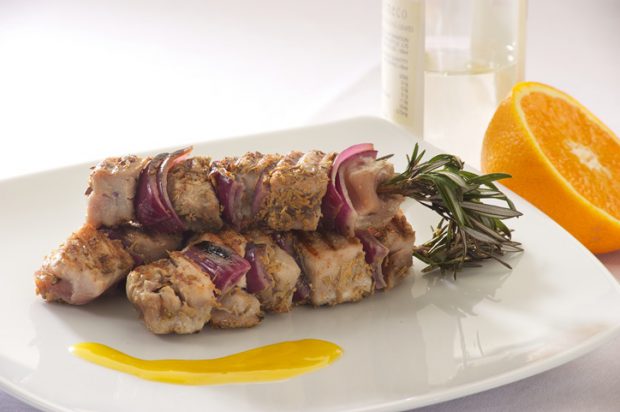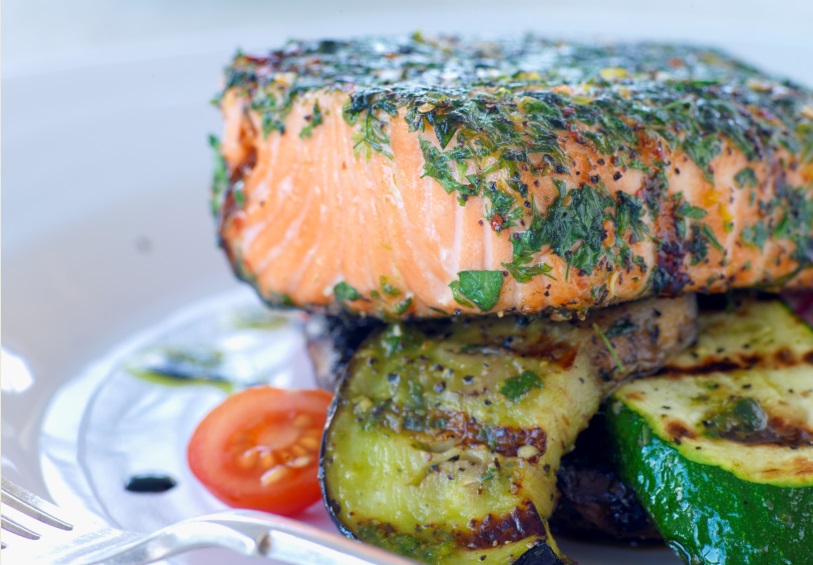Planning your summer seafood menus? December’s fish of the month is the delicious King Salmon, and for January, Bigeye Tuna adds flavour and freshness.
King salmon, known as Hāmana in Maori, is a fish worthy of its name, prized for its rich flavour and delicate texture.
Members of the Salmonidae family (trout, salmon), king salmon was introduced to New Zealand in the early 20th century. The species varies in colour, but fresh run salmon are largely silver, with a dark tinge on its back, dotted with black spots.
King salmon has a full, rich flavour with a delicate, “melt in the mouth” texture. It is highly regarded for its taste and texture – the result of a premium breed of salmon, which stores higher levels of natural oils. It is also a very versatile fish that can be cooked using a variety of methods. It cooks quickly and flakes easily when tested with a fork.
King salmon is delicious both cooked and served rare. It is frequently eaten raw as sushi or sashimi. You can buy king salmon whole, filleted, portioned or smoked. Good-quality king salmon will have an even consistency of vibrant apricot colour across the salmon meat, with firm, moist flesh.
The premium taste and texture of king salmon make it a popular Christmas protein, both when eating out or as part of a family celebration. For a quick and easy meal, try barbequed salmon. Mix together a handful of roughly chopped chervil and Italian parsley, lime zest, a pinch of chilli flakes, and a clove of garlic. Season with salt and pepper. Brush the salmon fillets with olive oil and dip into herb mix until generously coated. Barbeque until the fish is just cooked through. Serve on a bed of grilled seasonal vegetables, with a basil pesto sauce. For the complete recipe, visit www.seafood.co.nz

Bigeye tuna
Bigeye tuna (Thunnus obesus) are a fish belonging to the Scombridae, tuna and mackerel, family.
Favouring cool waters, this fish is found in depths of 300 metres off the coasts of New Zealand’s North Island where they are mainly caught by longline. The season for bigeye is typically between January and March, then September to November, with no catch from April to August.
As its name suggests, bigeye are distinguished by their large eyes, stout body and thick first dorsal fins. They have a metallic dark blue body, fading into a grey-white belly, and a lateral blue band that runs along the sides. A yellow sheen can be seen when big eye is first caught.
Bigeye tuna is regarded as a premium fish. Its deep red flesh lacks bones and has a rich flavour and texture that’s prized amongst foodies.
Packed full of omega-3s, this fish also has a higher fat content than other species of tuna, making it ideal for grilling, roasting and pan-searing, as it won’t dry out.
While the taste and texture of this fish is typically championed in raw dishes like sashimi or carpaccio, cooked bigeye is equally delicious.
Try making tuna skewers for an easy to prepare, summer dish. Blitz together fennel seeds, lemon zest and salt and pepper until a breadcrumb consistency. Skewer 2.5cm cubes of tuna, alternating with layers of onion, onto soaked rosemary stems or wooden skewers. Brush with olive oil and dust with the fennel crumb. Barbecue or grill for 6-8 minutes, turning once. For more seafood recipes, visit www.seafood.co.nz/recipes/








